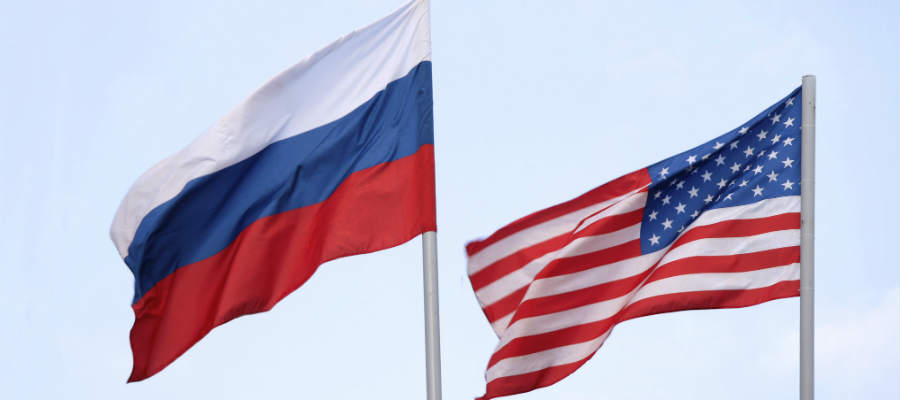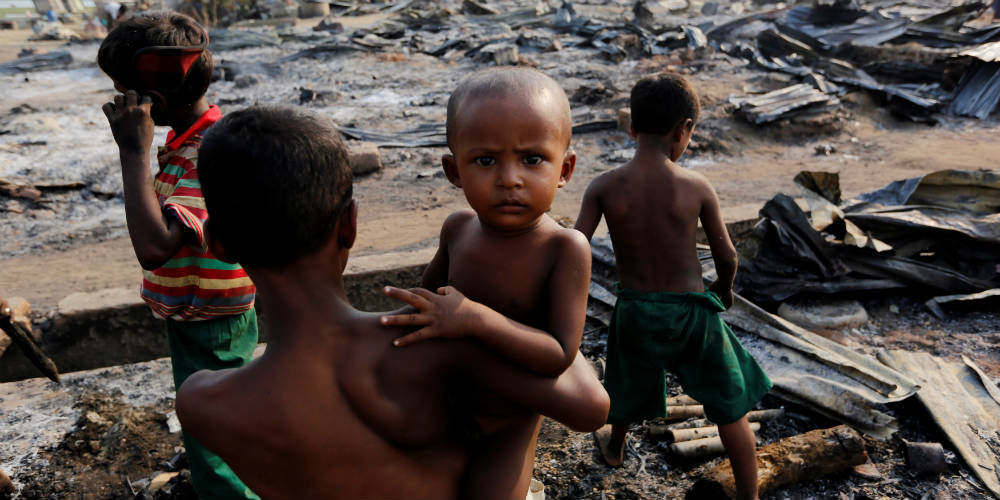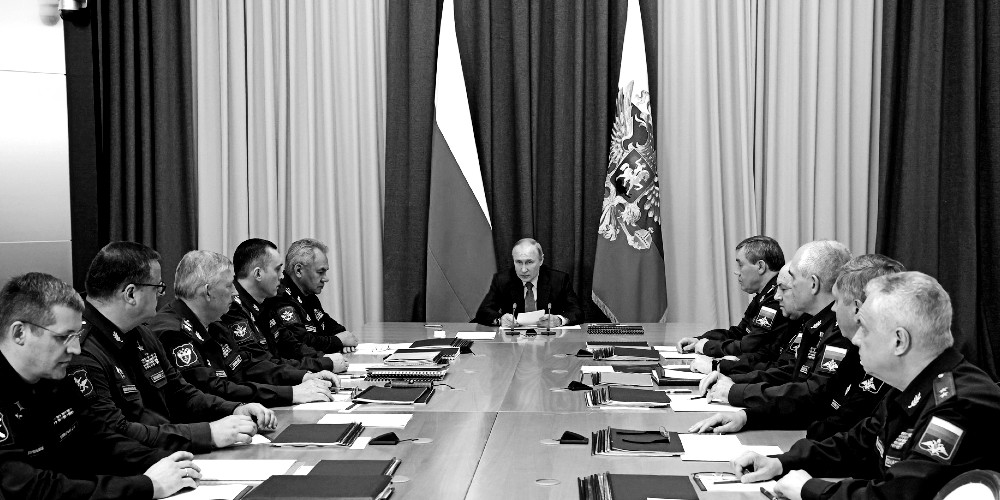BY RSN SINGH
A strategically revolutionary statement has been ascribed to a high ranking Russian foreign ministry official, Zamir Kabulov, that his country’s interests are same as Taliban (Afghan Taliban) in fighting Islamic State terror. Kabulov is considered to wield formidable influence in fashioning Russian policy on Afghanistan and Pakistan. Much to the disconcertment of India and Afghanistan, in the recently concluded Heart of Asia Conference, Kabulov came to defence of Pakistan on its role on terror. This was echoed by one Alexander Mantyskly in the upper house of Russian Parliament.
This development has in effect the potential to bring together Russia and Pakistan in enduring strategic alignment. Indications in this regard are getting increasingly pronounced. Joint military exercises in Khyber Pakhtunkhwa, Pakistan’s purchase of MI-35 helicopters, intention to purchase Su-35 fighters, visit of the three Pakistan Service Chiefs and intense confabulations on strategic issues, economic cooperation and connectivity — being some of them. This strategic approach if persisted with will also strategically impel Iran in the same direction. It will be a very tough call for India’s foreign policy establishment in case Russia-Taliban partnership materializes. It is a classic case of geopolitical flux overtaking foreign policy. The geopolitical flux can be best explained from the current chapter of recent capture of Aleppo city by government forces in Syria as beginning.
The rebel forces in Syria have lost the strategic town of Aleppo after months of bitter fighting with government forces. It is a watershed moment for Assad who not very long ago seemed beleaguered and considered a spent force. In fact, western countries had written his regime’s obituary. Aleppo in North West Syria is the most populous city and also country’s financial centre. The government now has significant writ as it has gained control of major cities in the west and the Mediterranean coast line. It is a major victory for Russia-Iran-Assad combine. Though the Islamic State was not much of a factor in the Aleppo battle, there were other rebel outfits, some two dozen, which included affiliates of Al Qaeda. In the case of Syria the largest is Jabhat Fatah al Sham which till very recently was known as Al-Nusra. Even the Islamic State (IS) is a reincarnation of Al-Qaeda in Iraq.
The groups engaged in war in Syria are motivated by different political, territorial and jihadi considerations. Some of these groups cooperate, and there are others who have inimical relations and clash when their interests collide. Aleppo, is one such area which was beset by Islamic State in the east and Syrian Kurdish groups in the North West. Both are hostile to each other and have clashed endemically. But both are equally hostile to anti- Assad rebels like Al-Fatah. The Kurds are motivated by territorial considerations hence Turkey opposes not only Assad but Kurds as well. Turkey is increasingly getting disquieted with the Islamic State.
Most groups engaged in conflict in Syria are being leveraged by some or other external power. It is beyond debate or rather is well documented that the US or NATO has leveraged several affiliates of Al Qaeda in different conflicts. The latest being Al-Nusra (now Jabhat Fatah al Sham) in Syria. Allegedly the Islamic State has been covertly supported and financed by US, Turkey, Saudi Arabia and Qatar. Nevertheless, Erdogan after July coup seems to have lost his desire to join European Union and is visibly tilted towards Moscow and Iran.
Strategic detractors or even some independent analysts are of the view that the Islamic State is part of long standing US project to territorially re-engineer Iraq and Syria in a manner that there is a Sunni Islamic Caliphate; an Arab Shia Republic and a Republic of Kurdistan. Syria happens to be the heartland of Arab culture.
In 2014, the Iranian newspaper Tehran Times carried a front page story allegedly saying that the Islamic State is a US ploy to destabilize the region and protect Israel. The story ascribed to Snowden leaks, described the Islamic State as a joint US, British and Israeli effort to ‘’create a terrorist organization, capable of centralizing all extremist actions across the world. ‘’ As per a New York based consultancy, Soufan Group report of Dec 2015, an estimated 27000 foreign jihadis from 86 countries had traveled to join the Islamic State. The Tehran Times story is far from corroborated, but it is certainly not bereft of geopolitical sense. It is increasingly becoming clear that the US not only created the Islamic State but was also responsible for resurrection of Muslim Brotherhood in Egypt. Further the US encouraged Erdogan to establish his own Caliphate so that the Islamic State could get a route to supply oil in world market. It may be mentioned that at its peak the Islamic State controlled 60 percent and 10 percent of Syria’s and Iraq’s oil production respectively.
The US led coalition had uncontested sway in influencing the civil war in Syria till Russia made an emphatic bid in September 2015 to reclaim its strategic space in West Asia, much to the chagrin of US, Israel and Saudi Arabia, amongst others. Israel and Saudi Arabia are perceived to be the biggest potential beneficiaries of the envisaged redrawing of the geopolitical map of West Asia by the US under Obama. The political umbilical of Obama administration with Saudi monarchy is hardly a secret. The link extended to Hillary Clinton as well, and in the process the Wahabis took advantage of the dependence. On this account India was surely a victim of Clinton’s acquiescence of Wahabis, specially from the likes of Zakir Naik. As far as Israel is concerned it was benefited in the sense that its worst enemies Syria and Iran were circumscribed and incapacitated to cause much harm. Speculations about links between Israel and Islamic State have never attenuated.
The Russian intervention apart from salvaging Assad from what seemed to be a hopeless situation gave a huge strategic boost to Iran. It became very clear that the targeting of Islamic State was only a ruse for the US coalition to debilitate government forces in Syria thus facilitating onslaught by the rebels. Since Aug 2014 the coalition has conducted more than 10000 air strikes, but till very late the Islamic State remained relatively unhurt and intact. It is only when the Russians forced their way through and began to genuinely target the Islamic State territory that it began to shrink and the cadres were in disarray. Consequently the Islamic State having suffered major territorial reverses changed its strategy and began to disperse. Instructions are being issued by the top Islamic State leadership urging volunteers not to travel to Syria and operate in autonomous mode in their respective countries.
As per US National Counter Terrorism Centre the Islamic State is now operational in 18 countries in the world including Afghanistan and Pakistan. There are also’’ aspiring branches’’ in Mali, Egypt, Somalia, Bangladesh, Indonesia and Philippines. In this year i.e. the Islamic State has carried out attacks in Turkey, Indonesia, Belgium, US and Bangladesh. There can therefore be no final or eventual victory over Islamic State just as Al-Qaeda continues to survive even after suffering US or NATO might all these years. They possibly cannot be snuffed by force because they are ideologically driven, and transcend ethnicity and nations.
What impacts India is the spread of Islamic State in South Asia. James Comey former FBI chief had warned that if the Islamic State wins and gets entrenched attacks on the West will increase, particularly Western Europe. The US, he said, will also suffer but minimally. Probably, by design then the Islamic State was diverted to South Asia!
The UN Assistance Mission in Afghanistan (UNAMA) maintains that all attacks in Afghanistan in the recent times were the handiwork of LeT, JeM, Haqqani network, Hizb-e- Islami, and Islamic State. The US, but curiously maintains strategic ambivalence over JeM and LeT and drums only Haqqani network. There is little doubt that the US has allowed LeT to flourish knowing fully well that the organization has global ambitions and consequent to Operation Enduring Freedom most of the Al Qaeda cadres had joined the LeT. Is it that Hafiz Saeed and Maulana Masood Azhar is coordinating Islamic State operations in Afghanistan at the behest of CIA and ISI?
As per the Director of National Intelligence, Afghanistan the Islamic State established its Khorasan branch in South Asia in Jan 2015 comprising disaffected members of Afghan Taliban and TTP. There are reports to suggest that the basic structure of Khorasan was assembled in Peshawar under the watchful eyes of ISI and then pushed into Nangarahar region of Afghanistan. Thousands of TTP cadres who joined Vilayat Khorasan were sent to Syria in 2014 and subsequently FATA born Hafiz Saeed Khan was made the chief. The Vilayat Khorasan has a brigade strength and in Afghanistan it is alluded as the’ ISI brigade.’
The attack on Shias in Afghanistan and Pakistan is probably being engineered to exacerbate the Shia-Sunni divide. Both, the Islamic State or its regional version Vilayat Khorasan are frantically recruiting for the ongoing internecine war in the core of the Islamic World. The Shia-Sunni conflict for dominance is witnessing a feverish pitch in South Asia. Iranian Revolutionary Guard (IRG) has been recruiting Hazaras in Afghanistan and Pakistan to fight alongside Assad forces on promises Iran’s residence permit and monthly salary of $500. It has formed two brigades from Shia recruits i.e. Fatemiyon Brigade and Zeinabiyoun Brigade. The recruitment of Shia Muslims is fueling sectarian attacks by the Islamic State. The spillover of Syrian conflict has been on India as well. 30,000 Shia Muslims volunteered to fight to protect Shiite shrines in Syria from Islamic State.
The US continues to lean heavily on Pakistan’s ISI for success of its geopolitical project in the region which is essentially an extension of West Asia. Does the US with the support of Pakistan aim to restrict Russia in Central Asia?
The military-intelligence establishment in Pakistan, historically adept at playing double game, is hedging its chances between US and Russia. The US operations in Abbottabad to kill Osama bin Laden in 2011 was the catalyst. For Pakistan the interests of China in this Great Game is also a critical factor. For the China-Pakistan Economic Corridor (CPEC) to enjoy sustainability, stability in the region is the main imperative.
This author has been told by several Balochis that the Islamic State or Lashkar Khorasan operatives are operating out of the barracks of Frontier Corps. The Khorasan militants have been let loose on Balochis to kill their struggle through the jihadi means of Islam.
As far as India is concerned notwithstanding its posturing, the US has a soft corner for LeT and JeM. It is also a fact the jihadi leaders have different strongholds in different parts of Pakistan and the region. The jihadi industry is an amalgamation of these. Probably at the behest of the Americans these outfits have entered into a partnership with Islamic State or Vilayat Khorasan. So the waving of Islamic flags in Kashmir Valley is not incidental and part of the larger phenomenon or design.
In the ultimate analysis India is getting increasingly entrapped in a new Cold War in the region i.e. American jihadis versus Russian jihadis—an ironical departure from the Islam versus Communism narrative staged in the battlefields of Afghanistan in the 80s, between Soviet forces and US funded and Pakistan trained jihadis.
(RSN Singh is a former military intelligence officer who later served in the Research & Analysis Wing. The author of two books: Asian Strategic and Military Perspective and Military Factor in Pakistan, he is also a Guest Blogger with Canary Trap. The opinions expressed by the author and those providing comments are theirs alone, and do not reflect the opinions of Canary Trap or any employee thereof)


